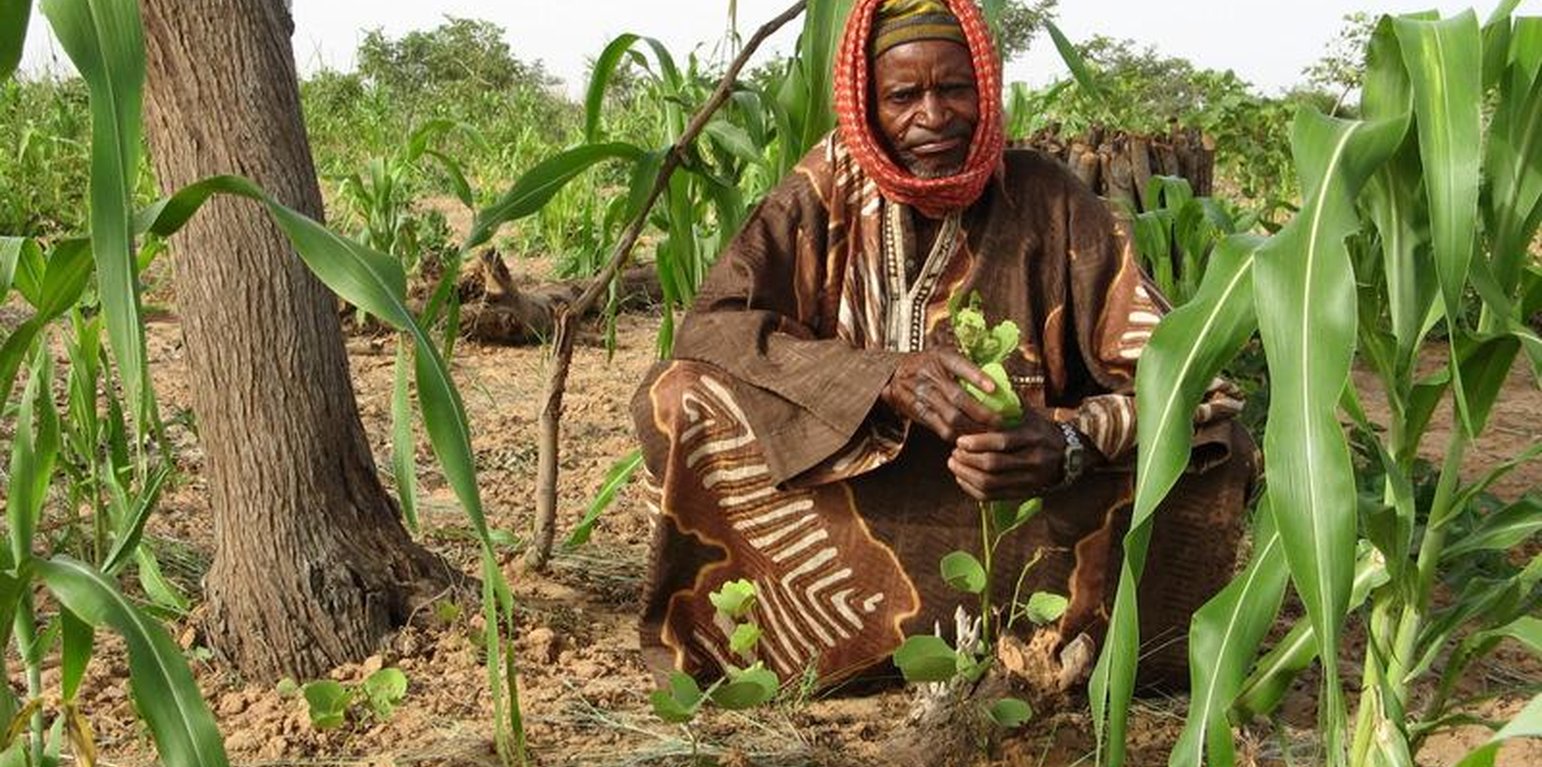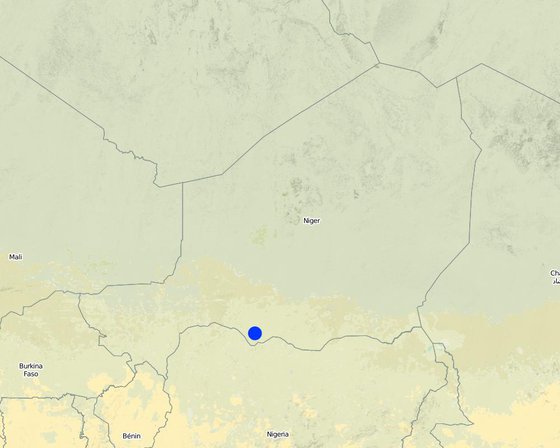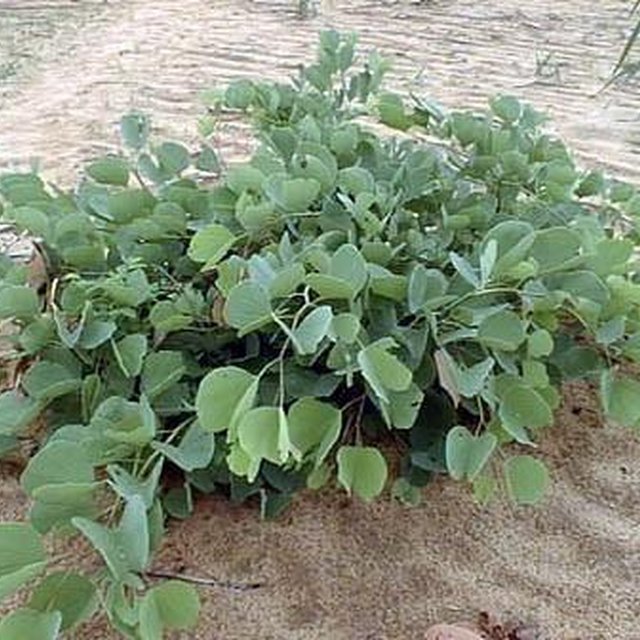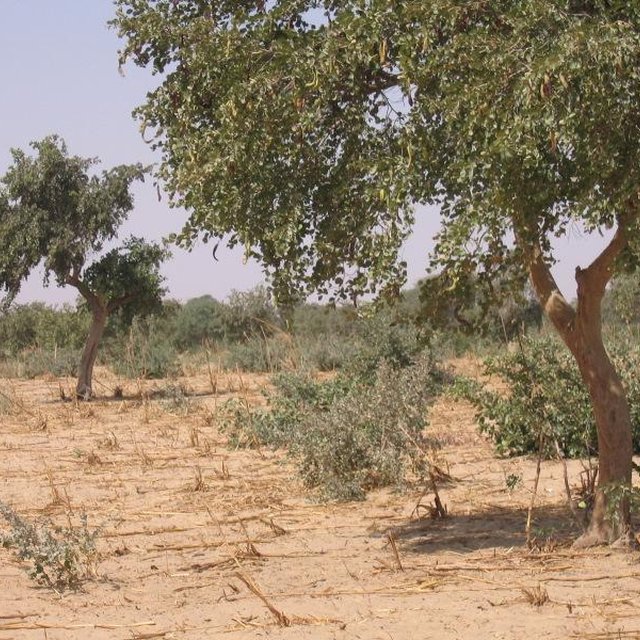



The naturally occurring seedlings and/or sprouts are managed and protected by local farmers. Most suitable are species with deep roots that do not compete with crops and have good growth performance even during poor rainy seasons. In the case study area the three most valuable species – as perceived by land users – are Faidherbia albida; Piliostigma reticulatum and Guiera senegalensis.
Purpose of the Technology: This option allows idle land to become a productive resource during an otherwise unproductive eight-month dry season.
Establishment / maintenance activities and inputs: The ideal density, when grown with cereal crops, is between 50 and 100 trees per hectare. For each stump, the tallest and straightest stems are selected and side branches removed to roughly half of the stem height. Excess shoots are then removed. Regular pruning of any unwanted new stems and side branches stimulates growth rates. Farmers are encouraged to leave 5 stems / shoots per tree, cutting one stem each year and letting another grow in its place. On removing a shoot, the cut leaves are left on the surface where they reduce erosion and are then eaten by termites, returning the nutrients to the soil. The remaining shoots continue to grow, providing a continuous supply of wood. From the first year, firewood is collected from trimmings. From the second year on, cut branches are thick enough to sell. A more intensive form of FMNR is to profit from every stump sprouting on the land.
Natural / human environment: FMNR is a simple, low-cost and multi-benefit method of re-vegetation, accessible to all farmers, and adapted to the needs of smallholders. It reduces dependency on external inputs, is easy to practice and provides multiple benefits to people, livestock, crops and the environment. Tree layout will need to be carefully considered if ploughs are used for cultivation.

ទីតាំង: Maradi, ប្រទេសនីហ្សេ
ចំនួនទីកន្លែងបច្ចេកទេស ដែលវិភាគ:
ការសាយភាយនៃបច្ចេកទេស: ត្រូវបានផ្សព្វផ្សាយត្រឹមតំបន់មួយ (50000.0 km²)
តើស្ថិតក្នុងតំបន់ការពារអចិន្ត្រៃយ៍?:
កាលបរិច្ឆេទនៃការអនុវត្ត: 10-50 ឆ្នាំ
ប្រភេទនៃការណែនាំឱ្យអនុវត្តន៍៖







| បញ្ជាក់ពីធាតុចូល | ឯកតា | បរិមាណ | ថ្លៃដើមក្នុងមួយឯកតា (ដុល្លារ) | ថ្លៃធាតុចូលសរុប (ដុល្លារ) | % នៃថ្លៃដើមដែលចំណាយដោយអ្នកប្រើប្រាស់ដី |
| កម្លាំងពលកម្ម | |||||
| Labour | ha | 1,0 | 6,0 | 6,0 | 100,0 |
| ថ្លៃដើមសរុបក្នុងការបង្កើតបច្ចេកទេស | 6.0 | ||||
| ថ្លៃដើមសរុបក្នុងការបង្កើតបច្ចេកទេសគិតជាដុល្លារ | 6.0 | ||||
| បញ្ជាក់ពីធាតុចូល | ឯកតា | បរិមាណ | ថ្លៃដើមក្នុងមួយឯកតា (ដុល្លារ) | ថ្លៃធាតុចូលសរុប (ដុល្លារ) | % នៃថ្លៃដើមដែលចំណាយដោយអ្នកប្រើប្រាស់ដី |
| កម្លាំងពលកម្ម | |||||
| Labour | ha | 1,0 | 4,0 | 4,0 | 100,0 |
| ថ្លៃដើមសរុបសម្រាប់ការថែទាំដំណាំតាមបច្ចេកទេស | 4.0 | ||||
| ថ្លៃដើមសរុបសម្រាប់ការថែទាំដំណាំតាមបច្ចេកទេសគិតជាដុល្លារ | 4.0 | ||||
At least doubled
Nutritious pods as fodder
Production value increased by 57%
Annual clearing and burning of tree stems (for land preparation) is not necessary any more
Edible leaves/fruits; bridge food shortages
Reduced wind speeds and dust; shade is available; barren landscape is returning to a natural savannah
FMNR acts as an insurance policy
គុណភាពមុន SLM: 30
គុណភាពក្រោយ SLM: 45
trees / ha
Increased tree density on farmland
Dung; livestock spends more time in fields with trees
From leaf fall and trimmings
Creation of habitat, food and shelter for predators of crop pests
Resulting in greater deposition of rich, wind blown silt; improved micro-climate